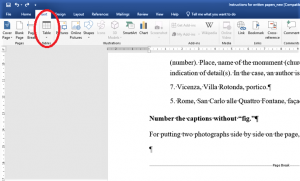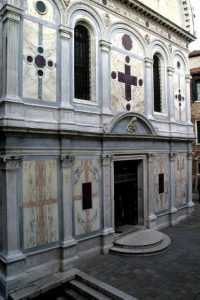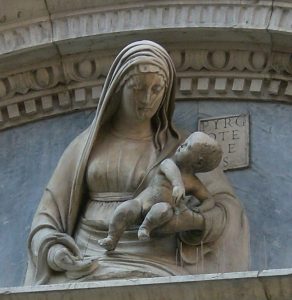Illustration Part
Illustrations should follow the text (after the bibliography). Do not insert illustrations within the text.
Illustrations should be referred in the text and consistently numbered (fig. 1, 2, 3 …).
Put the indication (fig. x) at a suitable place, that is, after the work of art has been mentioned. You may put the indication; best at the end of a sentence, before the period.
Punctuation mark follows the brackets:
Examples:
…, as can be noted in the earlier portrait (fig. 4).
Raphael’s Saint Cecilia in Bologna (fig. 6), a painting he already knew from etchings, became now one of his favorite pieces.
Search for good illustrations.
Print the illustrations large enough.
Max. 4 illustrations per page.
Captions
The captions are beneath or beside the illustrations.
In the caption, “fig.” should be eliminated.
Example 1 (Paintings, sculptures, etc.):
(number). Artist, Title of the art work (in italics), date, place, museum/archive/etc.
1. Raphael, The Ecstasy of Saint Cecilia, c. 1514–17, Bologna, Pinacoteca Nazionale.
Example 2 (Topography):
(number). Place, Name of the monument (church, house, castle etc.), if shown: Indication of detail(s). In the case that an author is known, it is not necessary to name him.
7. Vicenza, Villa Rotonda, portico.
5. Rome, San Carlo alle Quattro Fontane, façade, capital.
Please note: Captions should be numbered without “fig.” (“fig.” is only used as reference in the text)
For putting two photographs side by side on the page, insert table:
Go to “Insert” → “Table” → “Insert Table” → “□□”
Subsequently, you can insert the illustrations and captions into the table
Please note: the captions should contain only basic information, not text. Explanations are restricted to the main text.
Please note: You have to eliminate the frames.
Go to “home” → “borders” → “no borders”
If you explore one special art work in your paper/thesis, it is convenient to have an illustration of this work as fig. 1.
Do not repeat the same illustration in your illustration part.
Do not put the references (the sources, from where you took the illustrations) into the captions.
Add photographic credits at the end of the picture section.


